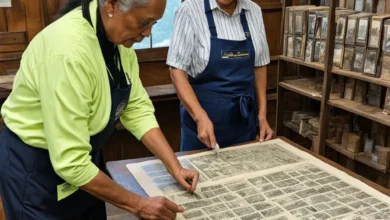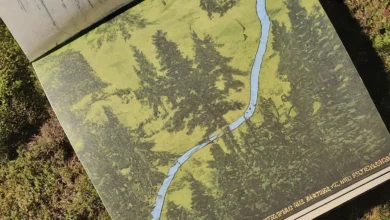Community Photography: Documenting Local Life and History

Imagine walking down the streets of your hometown 50 years from now. What would you see? How would it have changed? Now, picture having a visual record of those same streets from today. This is the power of community photography – a tool that captures the present and preserves it for future generations.
In an age where change happens at lightning speed, the art of documenting local history through photography has become more crucial than ever. It’s not just about taking pretty pictures; it’s about creating a visual time capsule that tells the story of your community.
The Importance of Community Documentation
Preserving Cultural Heritage
Community photography plays a vital role in preserving our cultural heritage. Every click of the camera captures a moment in time, freezing traditions, customs, and local ways of life. These images become priceless records of how we lived, worked, and celebrated.
For example, the famous “Migrant Mother” photograph by Dorothea Lange has become an iconic image of the Great Depression era. It helps us understand the hardships faced by families during that time, bringing history to life in a way that words alone cannot.
Building Community Identity
When we document our community through photos, we do more than just create images. We build a shared visual history that strengthens community bonds. These photos help create a sense of belonging and pride in our local area.
Think about your town’s annual festival or a beloved local landmark. Photos of these places and events remind us of our shared experiences and the unique character of our community. They help answer the question, “What makes our town special?”
Getting Started with Community Documentation
Choosing Your Focus
To begin your journey in community photography, consider focusing on:
- Local events (fairs, parades, sports games)
- Architecture (historic buildings, unique houses)
- Daily life (people at work, kids playing in parks)
- Natural landscapes (parks, rivers, changing seasons)
Look for what makes your community unique. Maybe it’s the way sunlight hits the old church steeple or how the whole town turns out for the high school football game. These are the moments worth capturing.
Equipment Essentials
Good news: you don’t need expensive gear to start documenting local history. Here’s a simple list to get you started:
- A camera (even a smartphone camera can work wonders)
- Extra batteries or a portable charger
- A notebook to jot down details about your photos
- Comfortable shoes for walking around your community
Remember, the best camera is the one you have with you. Don’t let a lack of fancy equipment stop you from starting your community documentation project.
Techniques for Effective Community Photography
Now that we understand the importance of community photography, let’s explore some techniques to help you capture compelling images that truly represent your local area.
Capturing Candid Moments
The heart of community documentation lies in authentic, unposed shots. Here are some tips:
- Be patient: Wait for natural interactions to unfold
- Blend in: Use a smaller camera to be less noticeable
- Shoot from the hip: Try taking photos without raising the camera to your eye
- Respect privacy: Always ask for permission when photographing individuals up close
Remember, the goal is to capture real life as it happens. A genuine smile or a moment of concentration can tell a powerful story about your community.
Architectural Photography
Buildings and landmarks are key elements in documenting local history. Try these techniques:
- Find unique angles: Get low or climb high for interesting perspectives
- Use leading lines: Utilize roads or fences to draw the eye to the building
- Capture details: Don’t forget to photograph interesting architectural features
- Consider timing: The golden hour (just after sunrise or before sunset) can add warmth to your shots
Event Photography
Community events are gold mines for capturing local culture. Keep these strategies in mind:
- Arrive early to capture setup and anticipation
- Look for emotions – joy, excitement, concentration
- Capture wide shots to show the scale of the event
- Focus on details that make the event unique (local foods, traditional costumes)
- Stay late to document the cleanup and quiet moments after the crowd leaves
Organizing and Preserving Your Photos
Taking photos is just the first step. Proper organization and preservation ensure your community documentation efforts stand the test of time.
Digital Asset Management
Keeping your digital photos organized is crucial. Consider these tips:
- Use descriptive file names: Include date, location, and event in the filename
- Create a logical folder structure: Organize by year, then by event or theme
- Use tags: Add keywords to make searching easier later
- Consider using software: Programs like Adobe Lightroom or Google Photos can help manage large collections
Archival Considerations
Preserving your photos for future generations requires some forethought:
- Back up your files: Use the 3-2-1 rule: 3 copies, 2 different media types, 1 off-site location
- Use archival-quality materials for physical prints and negatives
- Store in a cool, dry place away from direct sunlight
- Regularly check and migrate digital files to new storage mediums
- Consider donating copies to local historical societies or libraries
By following these organization and preservation techniques, you’re not just taking photos – you’re creating a lasting legacy of your community’s history.
Sharing Your Community Documentation
Your community photography efforts shine brightest when shared with others. Let’s explore ways to showcase your work and inspire community engagement.
Local Exhibitions and Presentations
Bringing your photos to the community can spark conversations and deepen local connections. Here are some ideas:
- Host a gallery night at a local community center or library
- Create a photo book of your town’s yearly highlights
- Offer a slideshow presentation at community meetings
- Partner with local schools for history projects
How to organize a community photo exhibition:
- Choose a theme that resonates with locals
- Select your best images that tell a cohesive story
- Find a suitable venue (community center, cafe, or empty storefront)
- Promote the event through local media and social networks
- Invite community leaders and residents to the opening
- Gather feedback to improve future exhibitions
Online Platforms
The digital world offers numerous ways to share your work in documenting local history:
- Create a dedicated website or blog for your project
- Use social media platforms like Instagram or Facebook to reach a wider audience
- Contribute to local history groups on platforms like Flickr or Reddit
- Start a YouTube channel with video tours of your photo collections
Tips for creating engaging online galleries:
- Organize photos into themed collections
- Write compelling captions that provide context
- Encourage community members to contribute their own photos and stories
- Regularly update with new content to keep followers engaged
Ethical Considerations in Community Photography
As a community photographer, you have a responsibility to represent your subjects and your town with respect and accuracy.
Respecting Privacy and Cultural Sensitivities
- Always ask for permission when photographing individuals up close
- Be aware of cultural taboos around photography in your community
- Respect “no photography” signs in private and sacred spaces
- Be extra cautious when photographing children – always get parental consent
- Consider the impact of your photos on vulnerable community members
Accurate Representation
Your photos will shape how others view your community, so aim for truthful portrayal:
- Avoid staging scenes that misrepresent daily life
- Capture a diverse range of community members and activities
- Be mindful of stereotypes and work to challenge them through your photography
- Provide context in captions to explain the significance of images
- Be open to feedback from community members about your work
Remember, your goal in community photography is not just to create beautiful images, but to document the authentic life and spirit of your local area.
The Long-Term Impact of Community Documentation
As we near the end of our exploration into community photography, let’s consider the lasting effects of your efforts in documenting local history.
Creating a Visual Time Capsule
Every photo you take today becomes a window into the past for future generations. Consider this:
- Today’s ordinary is tomorrow’s extraordinary: Simple scenes of daily life will fascinate viewers in 50 or 100 years
- Changing landscapes: Your photos may preserve views that will change or disappear over time
- Evolving culture: Capture current fashions, technologies, and social norms that will evolve
- Historical context: Your images might one day help historians understand local responses to global events
Think about the questions future viewers might ask about your community. Your photos could provide valuable answers and insights.
Inspiring Community Engagement
Community photography projects can spark positive change and deeper connections:
- Increased awareness of local issues and heritage
- Stronger community bonds through shared visual history
- Boost in local pride and sense of place
- Inspiration for community improvement projects
- Enhanced intergenerational connections as older residents share stories about historical photos
Examples of successful community documentation initiatives:
- The “Dear Photograph” project, where people hold up old photos in their original locations
- The Library of Congress’s “Prints and Photographs Online Catalog”, preserving historical images
- Local “Then and Now” photo books comparing historical and contemporary views of towns
These projects demonstrate how documenting local history through photography can engage communities and preserve valuable cultural heritage.
Conclusion
As we’ve explored throughout this article, community photography is more than just a hobby – it’s a powerful tool for preserving our shared history and strengthening our local bonds. By picking up your camera and focusing on the unique aspects of your community, you become both an artist and a historian.
Remember these key points as you embark on your community documentation journey:
- Start with what you know: Your own neighborhood is full of photo opportunities
- Be respectful and ethical in your approach to photographing people and places
- Organize and preserve your photos for future generations
- Share your work to inspire community engagement and pride
- Think long-term about the impact and value of your photography
Now, it’s your turn to make a difference. Grab your camera, step outside, and start capturing the heart and soul of your community. Every image you take adds a brushstroke to the grand picture of your local history.
Your community has a unique story to tell. Through your lens, you can ensure that story is preserved, shared, and cherished for generations to come. So, what will you photograph first?



